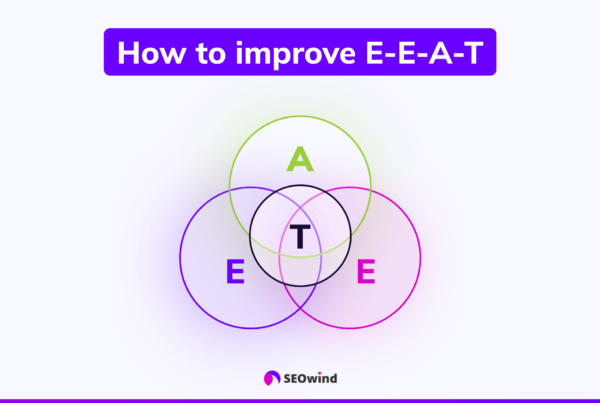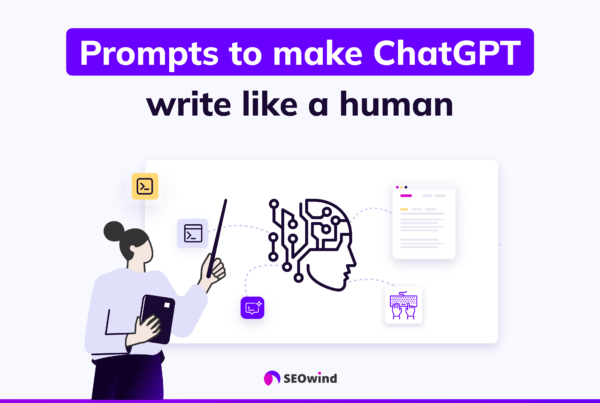The educational content writing field has transformed into a specialized, high-demand sector within content marketing. Valued at USD 15.8 billion in 2022, the Digital Education Content Market is projected to expand at an impressive 27% CAGR from 2023 to 2032 (Source: Global Market Insights).
This surge reflects a fundamental shift in how knowledge is shared across digital platforms. Educational content writers are no longer merely creating generic instructional materials; they’re crafting strategically designed content that engages learners, demonstrates expertise, and drives measurable results for organizations across various sectors.
“The most effective educational content today creates multiple engagement touchpoints for learners, allowing them to interact with material in ways that best suit their learning style,” says Tom Winter, founder of SEOwind. “It’s not just about delivering information. It’s about designing experiences that transform how people think.”
At its core, educational content aims to inform and enlighten audiences through demonstrating Experience, Expertise, Authoritativeness, and Trustworthiness (E-E-A-T). This specialized form of writing requires not only subject matter expertise but also an understanding of learning principles, audience needs, and content optimization strategies that make complex information accessible and engaging.
What is Educational Content Writing?
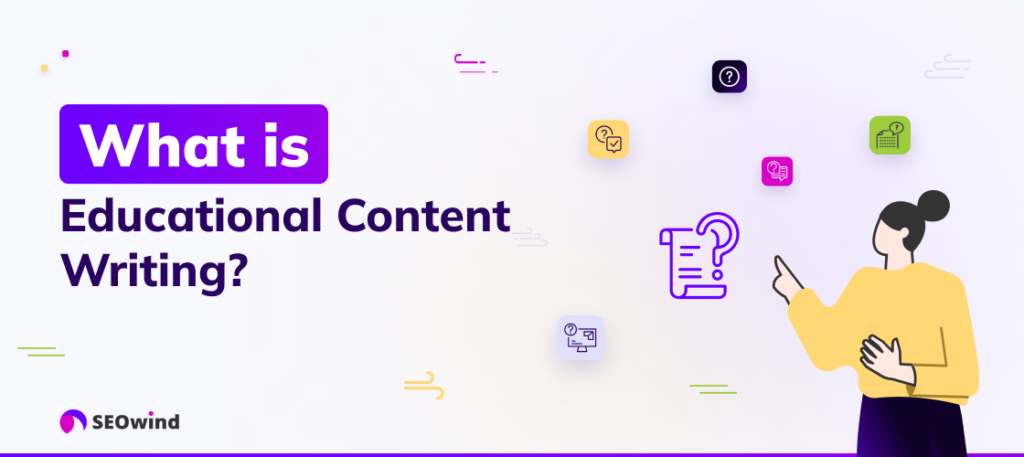
Educational content writing involves creating informative materials designed to teach or inform specific audiences about particular topics. Unlike promotional content focused on selling products or services, educational content prioritizes knowledge transfer, skill development, and audience enlightenment.
The most effective educational content demonstrates expertise by clearly explaining difficult concepts, offers trustworthy information supported by verifiable sources, and leverages real-world experience through case studies and practical applications. This foundation of E-E-A-T principles helps educational content rank higher in search results while genuinely serving audience needs.
Recent research from the 2024 State of Instructional Design Survey reveals a significant shift in who creates educational content, with nearly one-third of respondents identifying as Subject Matter Experts (SMEs) who actively design courses. This democratization of content creation has profound implications for how educational materials are developed and implemented.
Types of Educational Content Writing
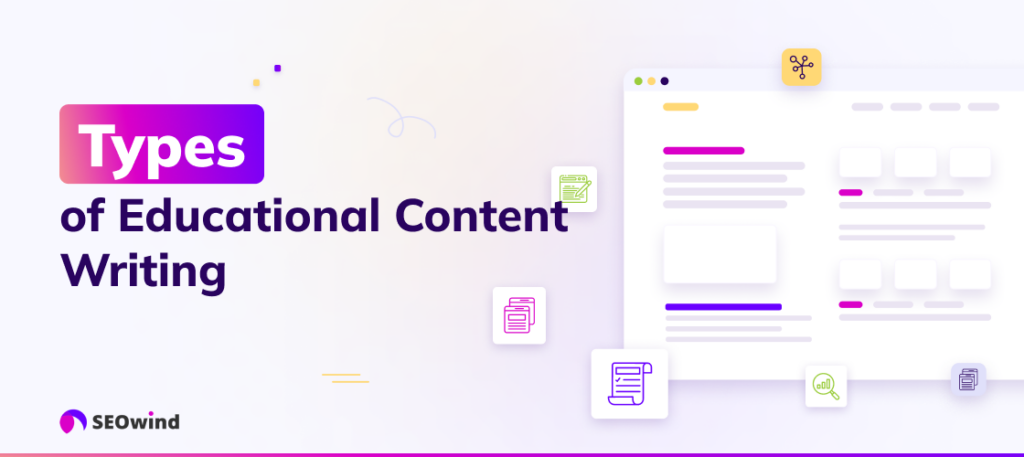
Here are four popular types of educational content writing and their benefits.
Educational Blog Posts and Articles
Educational blog posts are an excellent platform for writers to share knowledge and impart valuable inBlog posts and articles serve as foundational educational resources that organizations can use to establish authority and build organic traffic. These pieces typically:
- Address specific questions or pain points within a particular field
- Provide structured, digestible information with clear takeaways
- Include relevant visuals, examples, and external references
- Vary in length from short explainers to comprehensive guides
For instance, HubSpot’s Academy blog features educational articles on marketing, sales, and customer service topics that simultaneously serve as both valuable resources and top-of-funnel content in their marketing strategy.
Educational Ebooks and Whitepapers
Ebooks and whitepapers offer in-depth exploration of complex topics, presenting comprehensive information organized across multiple chapters or sections. These formats:
- Provide thorough coverage of specialized subjects
- Include relevant research, case studies, and expert insights
- Often serve as lead generation tools when gated behind forms
- Establish the creator as an authoritative voice in the field
Educational Videos and Interactive Content
Visual learners often benefit from educational videos, animations, and interactive content that present information in engaging, dynamic ways. These formats:
- Break down complex processes through visual demonstrations
- Allow self-paced learning through interactive elements
- Appeal to multiple learning styles simultaneously
- Often achieve higher engagement rates than text-alone formats
Curriculum Materials and Course Content
Educational institutions and e-learning platforms require structured curriculum materials that follow educational standards and learning objectives. These materials:
- Follow specific pedagogical frameworks
- Include assessment tools and learning checkpoints
- Build knowledge progressively from foundational to advanced concepts
- Address specific learning outcomes and competencies
Benefits of Educational Content Writing
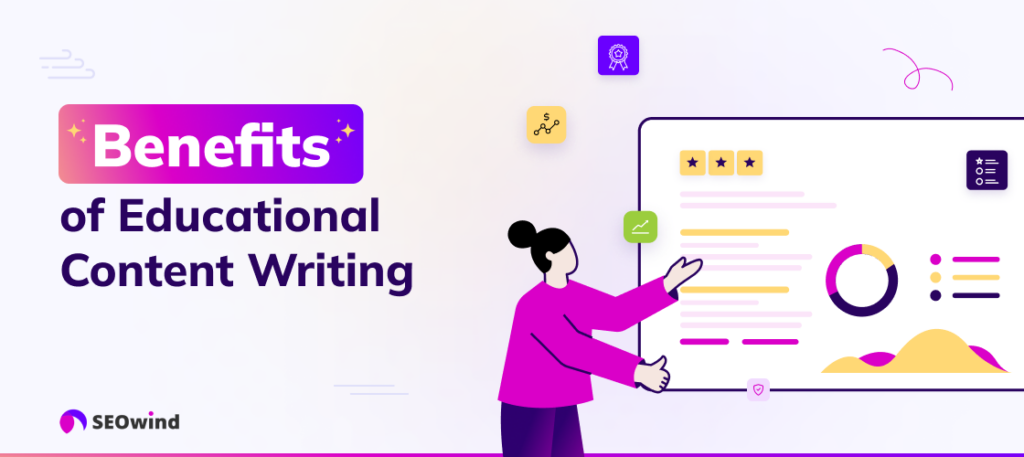
Educational content writing delivers multiple benefits for both creators and audiences when executed effectively:
Increase Brand Authority and Trust
Well-crafted educational content positions brands as trusted experts within their industries. By providing valuable information that solves real problems or answers meaningful questions, organizations demonstrate their expertise and build credibility with their audiences.
According to the research provided, educational content that demonstrates Experience, Expertise, Authoritativeness, and Trustworthiness (E-E-A-T) is increasingly prioritized by search engines and audiences alike. When readers consistently receive high-value information from an organization, they develop trust and loyalty that extends to the brand’s products and services.
Build Audience Relationships Through Value-First Approach
Educational content prioritizes audience needs over immediate conversion goals, fostering stronger relationships through genuine value delivery. This approach:
- Attracts prospects at earlier stages of their journey
- Builds goodwill through free knowledge sharing
- Creates multiple touchpoints with potential customers
- Positions the brand as a helpful resource rather than a pushy seller
Improve SEO Performance
Educational content typically targets informational search queries, which represent a significant portion of all search traffic. By creating comprehensive resources that address these queries, organizations can:
- Rank for valuable keywords with high search volume
- Capture organic traffic from users seeking specific information
- Improve overall domain authority through quality content
- Create link-worthy resources that attract backlinks naturally
Generate Qualified Leads and Conversions
While educational content prioritizes teaching over selling, it effectively nurtures prospects toward conversion by:
- Attracting users with specific problems or questions
- Demonstrating solutions that align with the organization’s offerings
- Building trust before asking for any commitment
- Creating natural pathways to related products or services
3 Core Characteristics of Educational Content Writing
Educational content writing possesses distinct characteristics that distinguish it from other content types:
Clarity, Focus, and Well-Structured Approach
Effective educational content presents complex information in ways that facilitate understanding through:
- Clear, straightforward language that avoids unnecessary jargon
- Logical progression of ideas that builds knowledge systematically
- Strategic use of headings, subheadings, and visual elements
- Consistent focus on learning objectives and key takeaways
This clarity isn’t about oversimplification but about making information accessible regardless of the reader’s prior knowledge level.
Technical Knowledge and Subject Matter Expertise
Educational content writers must possess or develop substantial knowledge in their subject areas to:
- Explain complex concepts accurately and comprehensively
- Anticipate and address common misconceptions
- Provide context that connects new information to established knowledge
- Answer follow-up questions readers might have
Unlike general content writing, educational content creation often requires specialized expertise or collaboration with subject matter experts to ensure accuracy and depth.
Research-Based, Evidence-Driven Approach
Trustworthiness is paramount in educational content, requiring writers to:
- Base assertions on verifiable facts and current research
- Cite credible sources appropriately
- Distinguish clearly between established facts and opinions or theories
- Present balanced perspectives on controversial topics
This research-driven approach establishes the content as a reliable information source while modeling good information literacy practices for readers.
Educational Content Writing for Different Contexts
Educational content varies significantly based on the intended audience and learning context. Research highlights distinct approaches required for different educational settings:
K-12 Educational Content
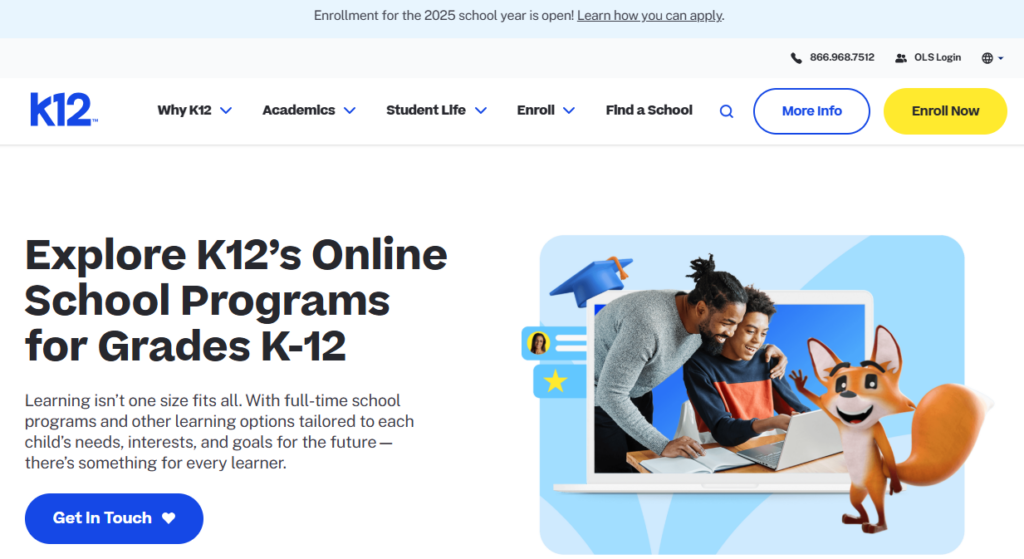
Content for K-12 audiences requires:
- Highly structured, explicit presentation with clear instructions
- Substantial scaffolding and regular feedback opportunities
- Engaging visuals and interactive elements to maintain attention
- Age-appropriate language and examples
- Alignment with curriculum standards and developmental stages
The significant 2024 Learning from Errors Study revealed that teachers who collaboratively worked with students to understand mistakes saw increased engagement and personal relevance. This finding suggests K-12 educational content should deliberately incorporate error analysis and collaborative problem-solving rather than presenting information as fixed and authoritative.
For example, elementary science content requires simpler language, more illustrations, and concrete examples compared to high school content covering similar topics.
Higher Education Content
Higher education materials expect greater learner independence and critical thinking through:
- More sophisticated theoretical frameworks and disciplinary conventions
- Emphasis on metacognitive reflection and self-directed inquiry
- Greater complexity of language and concepts
- Expectation of prior knowledge and intellectual foundation
- Focus on developing adaptable, lifelong learning skills
University-level content typically presents multiple perspectives, encourages scholarly discourse, and explicitly connects to field-specific research.
Higher education content needs to balance accessibility with academic rigor. The most successful educational materials guide students to think like practitioners in the field – asking the same questions and applying the same analytical frameworks as professionals, but with sufficient scaffolding to build confidence.
Professional Development and Corporate Training
Adult learners in professional contexts benefit from content that:
- Focuses on practical application and workplace relevance
- Acknowledges and builds upon existing knowledge and experience
- Presents information in a peer-to-peer rather than instructor-student dynamic
- Provides clear connections between learning and professional advancement
- Offers flexible, modular learning pathways that respect time constraints
Corporate training content tends to be results-oriented, with clear connections to job performance and business outcomes.
10 Tips for Writing Effective Educational Content
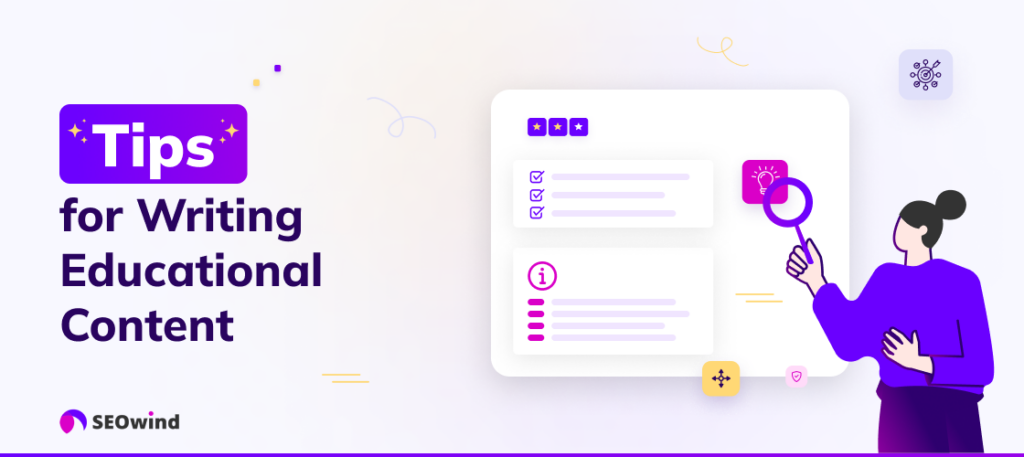
Creating impactful educational content requires attention to specific best practices:
Tip 1: Know Your Audience Deeply
Understanding your audience goes beyond basic demographics to include:
- Prior knowledge level and expertise in the subject
- Motivations for seeking this information
- Practical applications they intend for the knowledge
- Common misconceptions or challenges they face
This understanding should inform content complexity, examples chosen, and presentation approach.
Tip 2: Structure Content for Progressive Learning
Effective educational content builds knowledge systematically by:
- Beginning with foundational concepts before introducing more complex ideas
- Breaking complex processes into manageable steps
- Providing clear transitions between related concepts
- Including periodic summaries and knowledge checkpoints
Recent research from 2024 found that ungraded practice tests followed by feedback are particularly effective for learning retention. Incorporating low-stakes self-assessments throughout educational content creates these beneficial testing effects without the stress of formal evaluation.
This progressive structure helps readers build mental models that support deeper understanding.
Tip 3: Use Varied Content Formats for Different Learning Styles
People learn differently, so incorporating multiple formats enhances comprehension:
- Visual elements like charts, diagrams, and infographics
- Concrete examples and case studies
- Interactive components when possible
- Audio or video supplements for text-based content
The Carnegie Mellon Open Learning Initiative case study demonstrates how interactive content with immediate feedback helped students complete material in half the time while performing as well or better than traditional instruction methods.
Tip 4: Include Practical Applications and Real-World Examples
Abstract concepts become more accessible when connected to real-world applications:
- Industry-specific examples that demonstrate concept application
- Case studies showing how principles work in practice
- Step-by-step tutorials for procedural knowledge
- Problems or scenarios readers might encounter
Tip 5: Incorporate Active Learning Elements
Passive reading leads to lower retention compared to active engagement with material. The 2024 User-Centered Design Research emphasizes that the rise of AI necessitates a shift toward teaching disciplinary thinking skills rather than easily retrievable content.
To promote active learning:
- Include reflection questions throughout the content
- Provide opportunities for self-assessment
- Suggest practical exercises or applications
- Include decision points or scenarios that require applying the information
Tip 6: Balance Depth with Accessibility
Educational content should be comprehensive without overwhelming readers:
- Define technical terms when first introduced
- Use analogies to connect new concepts to familiar ideas
- Break complex topics into digestible sections
- Provide resources for further exploration
Tip 7: Optimize Readability and Visual Appeal
Visual presentation significantly impacts comprehension and engagement:
- Use consistent heading hierarchy and formatting
- Incorporate white space to prevent cognitive overload
- Choose readable fonts and adequate contrast
- Include relevant images, diagrams, or infographics
- Break up long text passages with visual elements
Tip 8: Include Evidence and Cite Sources
Backing claims with evidence establishes credibility:
- Cite current research and authoritative sources
- Include relevant statistics and data points
- Acknowledge different perspectives on debated topics
- Use expert quotes to reinforce key points
Tip 9: Provide Clear Next Steps
Effective educational content guides readers toward application:
- Summarize key takeaways at the end
- Suggest specific actions based on the information
- Recommend related resources for continued learning
- Address common implementation challenges
Tip 10: Test and Refine Based on Learning Outcomes
Measure the effectiveness of your educational content using appropriate metrics. According to educational analytics research, the top metrics for measuring educational content effectiveness beyond basic engagement include:
- Learning outcomes and competency gains through pre/post assessments
- Assessment performance analytics to identify areas of understanding versus confusion
- Behavioral changes and real-world application of learning
- Adaptive learning progression metrics that track personalized learning pathways
- Learner feedback and satisfaction through structured surveys and qualitative responses
Case Studies: Successful Educational Content Strategies
Carnegie Mellon Open Learning Initiative: Improved Learning Outcomes
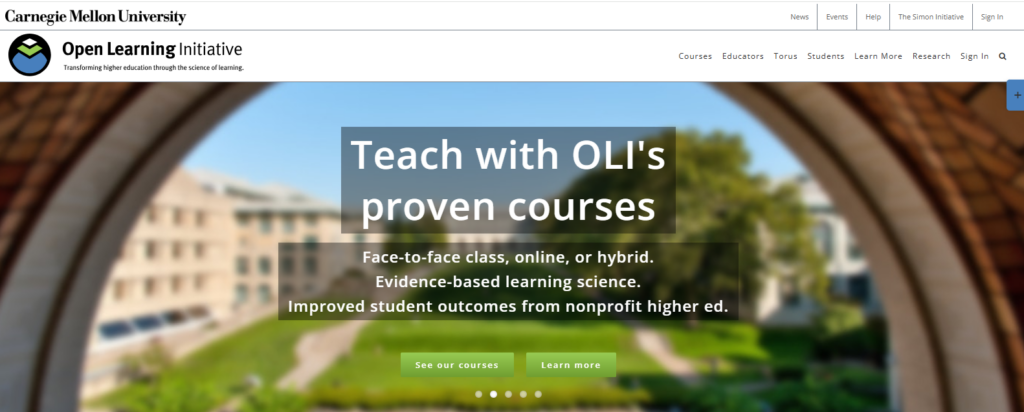
Carnegie Mellon’s Open Learning Initiative (OLI) demonstrates the impact of well-designed educational content on learning efficiency and outcomes.
Implementation Details:
- Interactive text with embedded practice exercises triggered at optimal learning moments
- AI-driven analytics to identify where students struggle with specific concepts
- Immediate, targeted feedback mechanisms based on cognitive learning science principles
- Adaptive learning paths that adjust content presentation based on performance
- Collaborative error analysis incorporated into the learning process
Challenges Overcome:
- Initial resistance from faculty concerned about technology replacing instructors
- Technical barriers to integration with existing learning management systems
- Complex development process requiring cross-functional teams of educators and technologists
- Need for extensive user testing to optimize interactive elements
Measurable Results:
- Students completed coursework in half the time compared to traditional lecture formats
- Equal or better performance on standardized assessments despite reduced instruction time
- 18% improvement in knowledge retention measured after course completion
The OLI implementation demonstrates how evidence-based educational content design can dramatically improve learning efficiency while maintaining or enhancing outcomes.
Arizona State University: Increased Enrollment and Retention
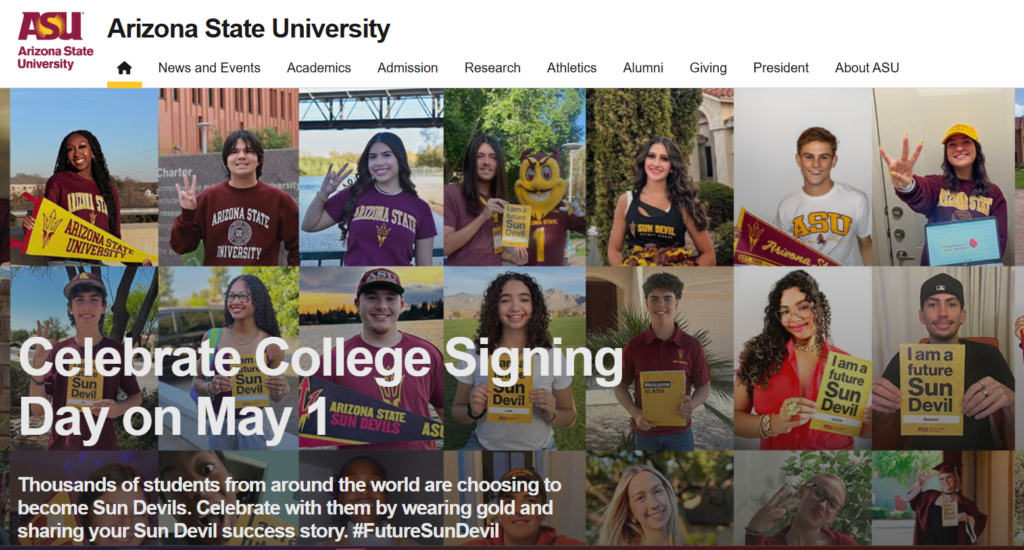
Arizona State University collaborated with Pearson to develop adaptive learning platforms with custom educational content.
Implementation Details:
- Content broken into modular “learning objects” that could be recombined for different learning pathways
- Real-time misconception identification and remediation through intelligent content sequences
- Integration of multimedia elements specifically designed for different learning preferences
- Personalized learning experiences based on continuous assessment
- Learning science principles incorporated into content structure and presentation
Challenges Overcome:
- Significant faculty retraining needed to leverage the new content formats
- Initial increase in development costs compared to traditional course materials
- Technical limitations of existing infrastructure requiring substantial upgrading
- Resistance from students unfamiliar with adaptive learning approaches
Measurable Results:
- 17% increase in course completion rates across implemented courses
- 47% reduction in withdrawal rates, particularly among first-generation college students
- 22% improvement in pass rates for historically challenging gateway courses
- Enrollment increases of 15-28% in redesigned courses
What made the ASU implementation successful was the focus on content personalization based on individual learning patterns. The most effective educational content adapts to the learner, not the other way around. They saw particularly strong improvements among students who previously struggled with traditional formats.
Duolingo: Enhanced Student Engagement Through Applied Learning Science
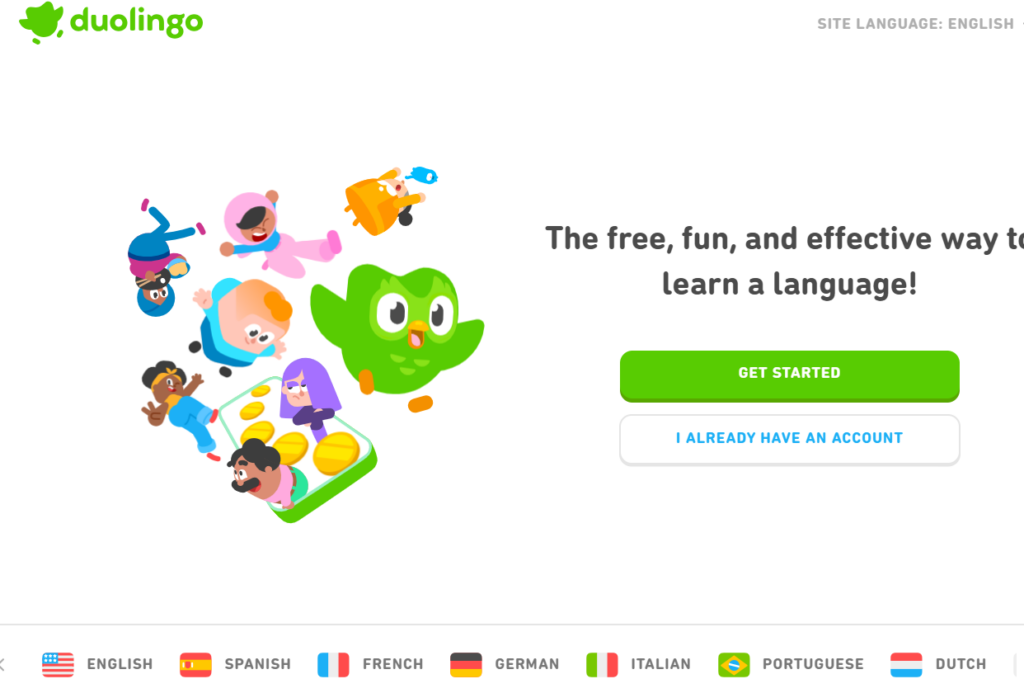
Duolingo’s approach to language learning content demonstrates how educational writing principles can drive engagement:
Implementation Details:
- Content developed using spaced repetition principles to optimize memory retention
- Bite-sized lessons (5-10 minutes) based on psycholinguistic research on attention spans
- Gamification elements directly tied to learning objectives rather than arbitrary rewards
- AI-powered content sequencing adapting to individual error patterns
- Active recall and production rather than passive recognition exercises
Challenges Overcome:
- Initial skepticism about the effectiveness of mobile-based language learning
- Competing priorities between engagement metrics and learning outcomes
- Balance between game elements and serious educational content
- Need for continuous content updates across multiple languages
Measurable Results:
- Independent research found 34 hours of Duolingo equivalent to a semester of college-level language instruction
- User retention rates 3.2x higher than industry average for educational apps
- 78% of users reported increased confidence in practical language use after 3 months
- 25% increase in long-term retention when comparing spaced repetition vs. traditional lesson formats
- Average user vocabulary acquisition of 2,000+ words with active usage capability
The most effective educational content breaks learning into achievable chunks that provide immediate feedback and a sense of progress. As Luis von Ahn claims five 10-minute sessions spaced throughout the week lead to better retention than a single 50-minute session – a principle they’ve built directly into Duolingo’s content design.
Marketing Educational Content Example – HubSpot
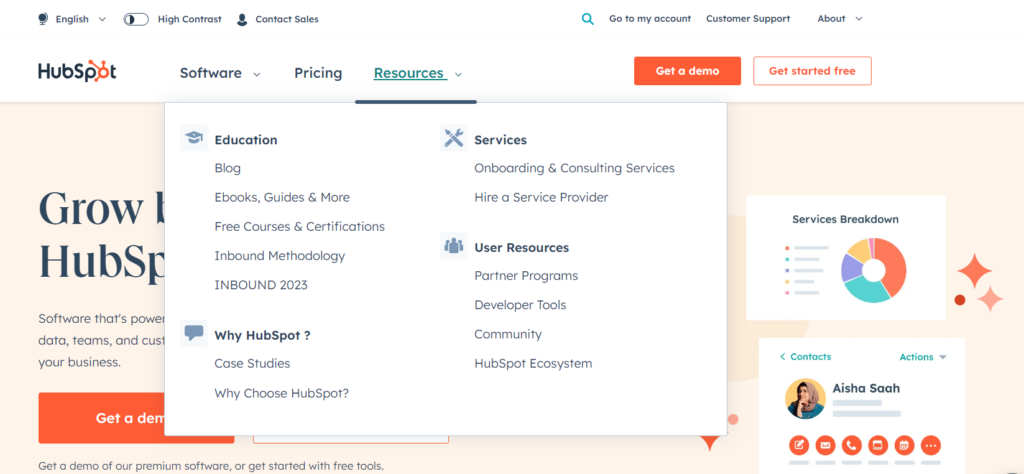
At its core, HubSpot‘s content marketing strategy hinges on the idea of providing valuable, educational resources that address the pain points and challenges faced by businesses in their marketing, sales, and customer service efforts. This is achieved through a wide array of content formats, including blogs, webinars, ebooks, case studies, podcasts, videos, and online courses.
Nonprofit Educational Content Example – charity:water
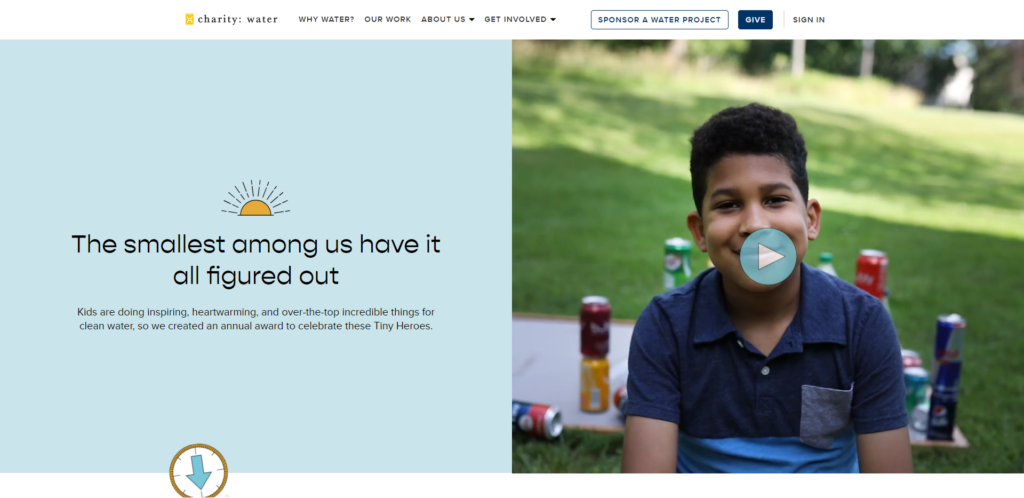
Charity:water is a nonprofit organization dedicated to providing clean water to people in developing countries. A significant part of their success comes from creating effective educational programs and content that raises awareness about global water scarcity issues while inspiring action amongst donors and supporters.
Their efforts include:
- Compelling storytelling through visual mediums such as photography and video documentaries
- Informative blog posts detailing the organization’s initiatives, projects, and results
- Social media campaigns that use graphics, statistics, and real-life stories to convey their mission’s urgency
By leveraging various types of educational content writing – blogs, videos, social media posts -charity:water connects with audiences on multiple levels. Their hard-hitting stories spark empathy-based engagement with support causes related to water scarcity globally.
In both cases – HubSpot and charity:water – the organizations effectively use educational content writing to inform and engage their target audiences while positioning themselves as industry leaders. Incorporating lessons from these examples can help ensure your educational content efforts are equally effective and influential in attracting more interested readers, clients, or supporters.
Career Paths in Educational Content Writing
The educational content writing field offers diverse career opportunities with competitive compensation:
Job Roles and Responsibilities
Educational content writers work in various capacities:
- Curriculum developers creating structured learning materials
- Instructional designers planning and executing learning experiences
- Subject matter experts providing specialized content in technical fields
- E-learning content writers developing online course materials
- Blog and article writers creating educational marketing content
Educational content writing has transformed dramatically. Today’s most successful writers blend traditional pedagogical knowledge with digital storytelling skills and data analysis.
Required Qualifications and Skills
Successful educational content writers typically need:
- Strong writing and editing abilities
- Subject matter expertise in relevant areas
- Understanding of learning principles and instructional design
- Research and fact-checking capabilities
- Ability to translate complex concepts into accessible language
- Familiarity with SEO principles for digital content
Salary Expectations and Job Market
The educational content writing market shows promising growth aligned with the expanding edtech industry:
- The educational publishing segment is growing at a 17.2% CAGR
- Freelance rates typically range from $25-50 per hour
Tools for Creating Educational Content
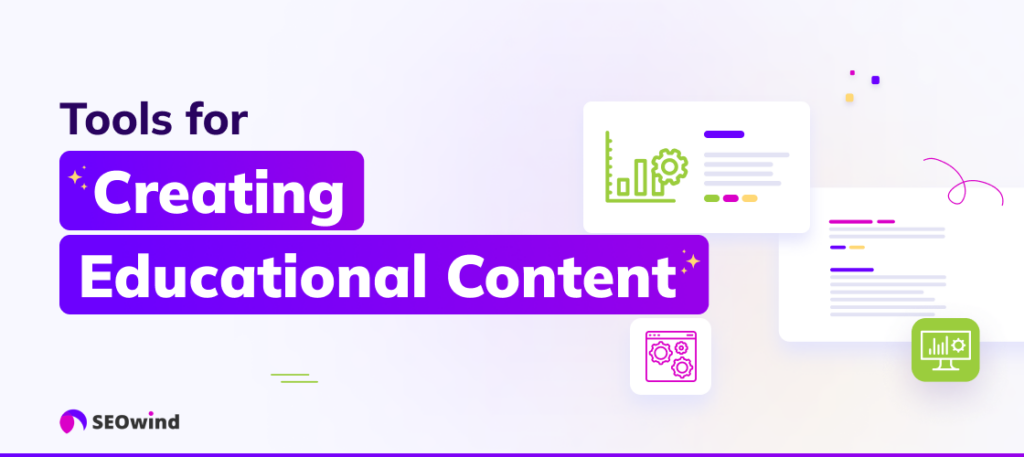
Creating informative and engaging educational content requires using the right tools to streamline your writing process. These tools can help you research, organize ideas, create visuals, proofread, and more.
Research and Idea Generation
- Google Scholar: This is an excellent resource for writers looking to research academic publications, literature reviews, and reputable articles within various fields.
- Evernote: Use Evernote to save interesting articles or sources on the go, create notes, and organize them in notebooks – making it easier for you when it comes time to write your content.
- Survey tools like SurveyMonkey or Google Forms: Gather audience insights and needs
Content Writing
- SEOwind: SEOwind is an AI Writing Tool that writes comprehensive and well-researched educational content.
Content Editing
- Grammarly: Grammarly is a helpful tool that helps you eliminate grammar errors while offering suggestions for improving clarity, style, and tone.
- Hemingway Editor: As mentioned earlier, keeping readability at an appropriate level is essential in educational content writing. Hemingway Editor helps you by highlighting complex sentences or overly challenging words so that you may simplify them accordingly.
Visual Content Creation
- Canva: Canva allows users to create captivating visual materials (infographics, social media graphics) without any design expertise required.
- Piktochart: Similar to Canva but focused on infographics creation specifically, Piktochart contains numerous customizable templates to produce visually appealing data presentations suitable for any topic.
- Loom: Record instructional videos and screen captures
- H5P: Develop interactive content elements like quizzes and simulations
Organization & Collaboration
- Trello: Ideal for managing content projects involving multiple team members; Trello’s boards allow the organization of tasks and seamless coordination with collaborators.
- Google Drive: Working with Google’s suite of collaborative tools (Docs, Sheets, Slides) simplifies document sharing with team members while allowing real-time editing capability.
SEO Optimization
- Yoast SEO Plugin: For those utilizing WordPress as their content management system, the Yoast plugin offers significant assistance in optimizing your written work based on target keywords to improve search engine rankings.
Educational Content Management Systems
- Open edX: Open-source platform for creating and delivering courses
- Articulate Rise: Develop responsive e-learning content
- Adobe Captivate: Create interactive learning experiences
- Moodle: Manage and deliver educational content in structured courses
Access to these tools can take your educational content writing to new heights by streamlining various aspects of the creative process. However, it is crucial not to rely solely on them. Always remember that quality research and understanding you
AI in Educational Content Writing: Opportunities and Ethical Considerations
The integration of AI tools in educational content creation presents both opportunities and challenges:
AI Applications in Educational Content
AI tools can enhance educational content development through:
- Research assistance and information synthesis
- Content outlining and structure suggestions
- Grammar and readability improvements
- Translation for multilingual audiences
- Content personalization based on learner profiles
Best Practices for Using AI Tools
When incorporating AI in educational content creation:
- Use AI as a collaborative tool rather than a replacement for human expertise
- Verify all AI-generated information for accuracy
- Maintain a consistent voice and pedagogical approach
- Review for potential biases in AI-generated content
- Add human insights, examples, and nuance
Ethical Considerations
The use of AI in educational content raises important ethical questions:
- Attribution and transparency about AI use
- Ensuring factual accuracy and preventing misinformation
- Addressing potential biases in AI training data
- Maintaining academic integrity standards
- Protecting student data privacy when using personalization
While AI can be a powerful tool in content creation, it requires significant human guidance and input to produce high-quality, educational content. My experience shows that the most effective AI-human collaboration model involves having subject matter experts direct the AI’s research capabilities while maintaining firm control over pedagogical decisions and learning design.
How to Create Engaging Educational Content
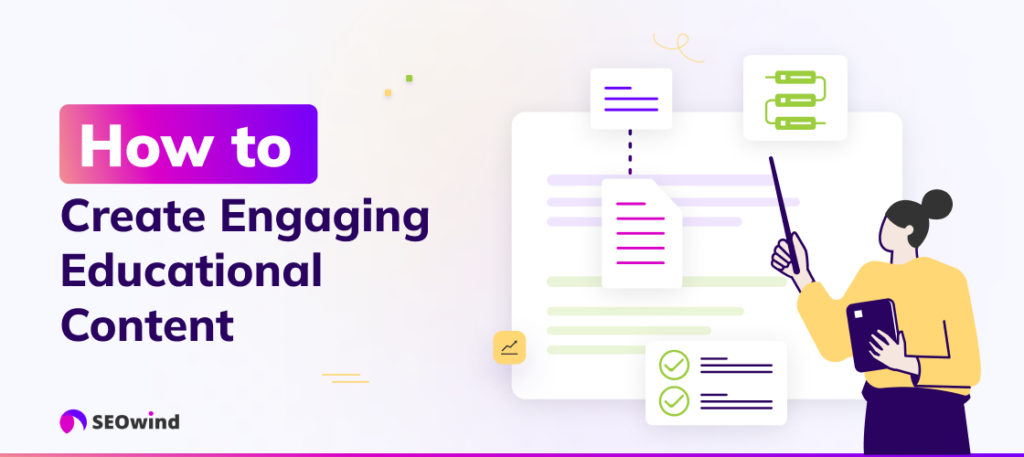
Creating truly engaging educational content involves a systematic approach:
Research Your Topic Thoroughly
Comprehensive research forms the foundation of credible educational content:
- Consult scholarly sources, academic journals, and reputable publications
- Interview subject matter experts for specialized insights
- Analyze current discussions and questions in relevant communities
- Identify common misconceptions and knowledge gaps
This research allows you to add unique value by addressing questions competitors don’t cover and incorporating proprietary insights.
Develop a Strategic Content Outline
A well-structured content outline provides the framework for effective educational materials:
- Identify key learning objectives for your content
- Organize topics in a logical progression that builds knowledge
- Plan for visual elements and interactive components
- Include opportunities for knowledge checking and application
Write Clear, Accessible Content
The writing process should focus on clarity and comprehension:
- Begin with an engaging introduction that establishes relevance
- Define key terms before using them extensively
- Use concrete examples to illustrate abstract concepts
- Break complex ideas into manageable components
- Maintain a conversational yet authoritative tone
The 2024 Learning from Errors Study offers valuable guidance here, showing that discussing errors collaboratively (rather than speaking “at” learners) produced significantly better outcomes. This suggests educational content should adopt a more conversational, exploratory tone rather than an authoritarian voice.
Incorporate Visual and Interactive Elements
Visual components significantly enhance learning retention:
- Use diagrams to show relationships between concepts
- Include charts and graphs to represent data visually
- Add screenshots or illustrations for procedural content
- Create or source videos for demonstrations
- Develop interactive elements for practical application
Edit for Clarity and Accuracy
Thorough editing ensures your educational content achieves its objectives:
- Verify all factual claims and citations
- Check for logical flow and clear transitions
- Assess readability using tools like Hemingway Editor
- Remove unnecessary jargon or overly complex language
- Test comprehension with representative audience members
How to Optimize Educational Content for Search Engines
Educational content requires strategic optimization to reach searchers effectively:
Conduct Educational Keyword Research
Start with thorough keyword research focused on informational queries:
- Identify common questions in your subject area
- Research terminology used by both novices and experts
- Look for long-tail phrases with educational intent
- Analyze search volume and competition for topics
Structure Content for Featured Snippets
Educational content often competes for featured snippet positions:
- Include direct question-and-answer formats
- Create clear definitions for key terms
- Use ordered lists for processes and procedures
- Structure content with clear H2 and H3 headings
“Featured snippets represent a tremendous opportunity for educational content,” explains Tom Winter, Founder & CGO at SEOwind “Our educational clients who structure content specifically for featured snippets see an average 22% increase in organic traffic and significantly higher click-through rates compared to standard rankings.”
Optimize for User Experience Signals
Search engines increasingly value user engagement metrics:
- Ensure fast page loading times
- Create mobile-friendly content layouts
- Include engaging visuals that support learning
- Structure content for easy scanning and reading
Build Quality Backlinks Through Value
Educational content naturally attracts links when it provides exceptional value:
- Create comprehensive, authoritative resources
- Publish original research or insights
- Develop shareable infographics and visual assets
- Update content regularly with current information
Educational Content Writing Templates
Effective educational content often follows established structures. Here are frameworks you can adapt for various contexts:
How-To Guide Template
- Introduction: Define the skill or process and explain its importance
- Prerequisites: List any required prior knowledge or materials
- Step-by-step instructions: Detail each step with explanations and visuals
- Common challenges and solutions: Address typical difficulties
- Application examples: Show the skill in different contexts
- Further practice opportunities: Suggest ways to develop mastery
- Additional resources: Recommend supplementary materials
Successful Example: Khan Academy’s “Introduction to Linear Algebra” guide follows this template precisely, beginning with clear prerequisite math knowledge, providing step-by-step visual explanations, addressing common confusion points, and offering interactive practice opportunities.
Concept Explanation Template
- Definition: Clear explanation of the concept in accessible language
- Historical context: Brief overview of concept development
- Key components or principles: Breakdown of fundamental elements
- Visual representation: Diagram, chart, or illustration
- Real-world applications: Practical examples of the concept in action
- Common misconceptions: Clarification of frequent misunderstandings
- Related concepts: Connections to other relevant ideas
- Further exploration: Resources for deeper understanding
Successful Example: Crash Course’s “Understanding Supply and Demand” video and accompanying article follows this template, starting with clear definitions, providing historical context, breaking down key principles with animated visuals, and addressing common misconceptions. This content has garnered over 4 million views.
Problem-Solution Template
- Problem introduction: Clear statement of the issue and its impact
- Root causes: Analysis of underlying factors
- Solution approaches: Multiple methods to address the problem
- Comparative analysis: Pros and cons of different solutions
- Implementation guidance: Practical steps for applying solutions
- Measurement criteria: How to evaluate solution effectiveness
- Case examples: Real situations where solutions were applied
Common Mistakes in Educational Content Writing
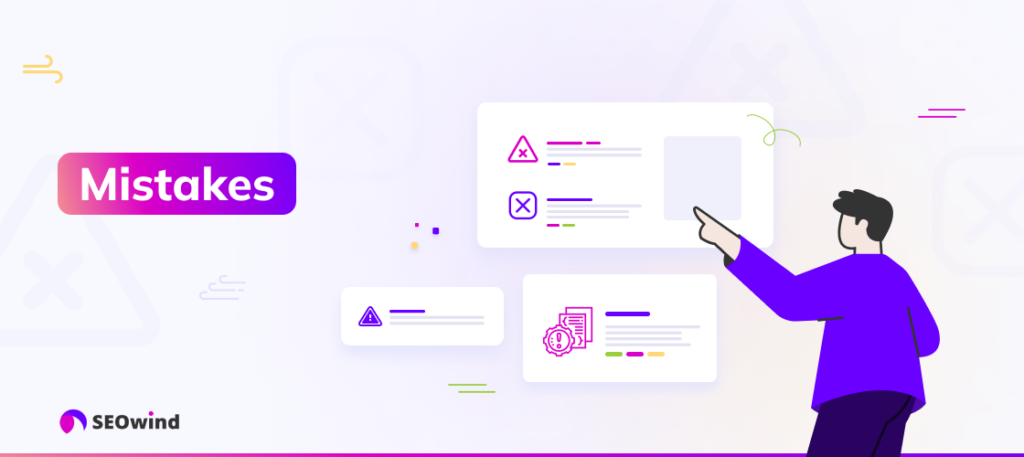
Mistakes can be detrimental to the effectiveness of your educational content. To ensure that your content appeals to readers and achieves its intended purpose, avoid making these common errors:
Failing to Research Thoroughly
One key element that sets educational content apart from other forms of writing is its strong emphasis on accuracy and well-researched information. Failing to research facts, figures, or concepts will lead to misleading or incorrect material. This discredits your reputation as an expert and frustrates readers seeking accurate information.
To minimize this risk:
- Utilize reliable sources such as scholarly articles, research studies, reputable news outlets, and official organizations.
- Double-check data before including it in your content.
- Properly cite sources whenever you reference them.
Using Too Much Technical Jargon
While it’s important to demonstrate expertise in educational writing, excessive technical jargon can alienate readers and hinder their understanding of the material. Remember that most people accessing educational content are beginners or non-experts looking for a straightforward explanation.
To counteract jargon overload:
- Use plain language whenever possible.
- Replace complex terms with simpler alternatives without sacrificing meaning.
- Include definitions for any specialized vocabulary you need to use.
Not Having a Clear Focus
Effective educational content should have a specific focus or goal, allowing the reader to grasp the main concept easily. Without clear direction, your piece may feel disjointed and difficult for readers to follow. Avoid going off tangents by staying focused on the primary topic throughout the article.
Implement these strategies for proper focus:
- Craft a concise thesis statement outlining your key idea(s).
- Organize your material into logical sections with appropriate subheadings.
- Reread and edit your work, removing irrelevant or off-topic information.
